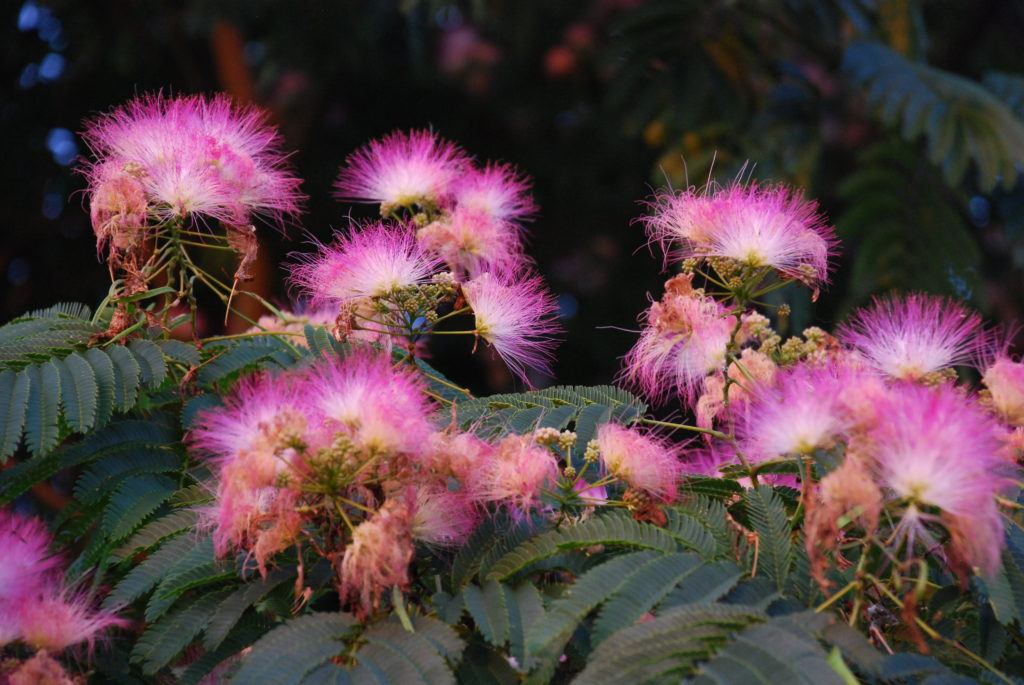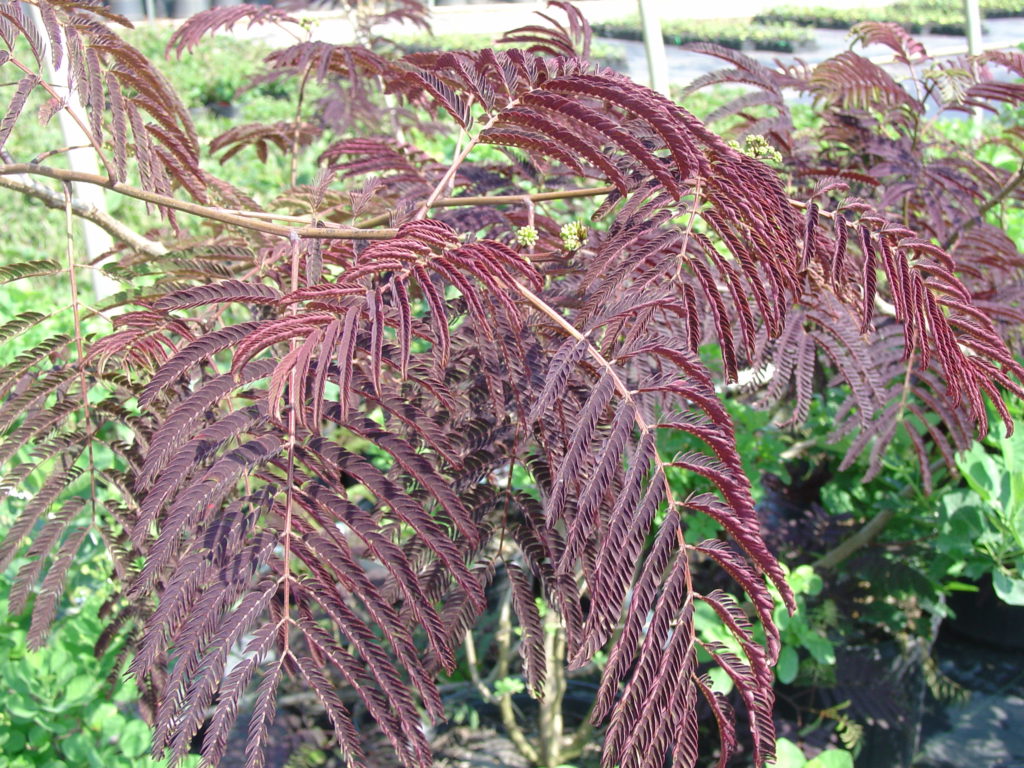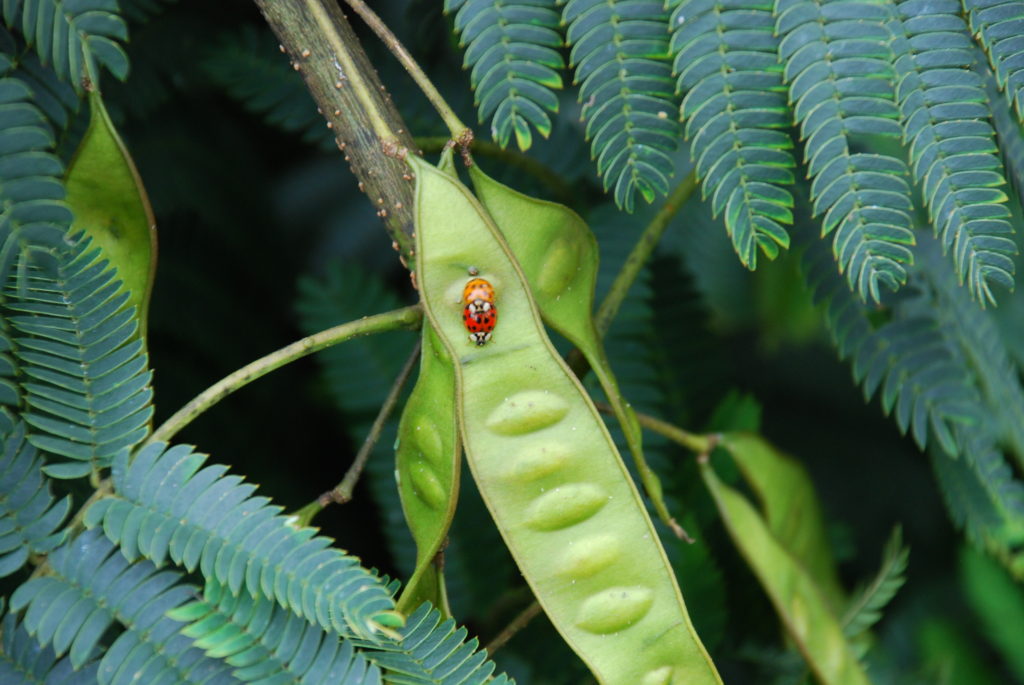Over the hot spring and summer months, weedy Mimosa trees (Albizia julibrissin) stand beautiful along U.S roadsides. During the rest of the year, people pay very little attention to this arboreal Asian beauty that inhabit a vast area from Iran to China (USDA hardiness zones 6-9).

From late spring through summer, mimosa struts an attractive fine textured green foliage and lovely flowering. It leaves out as late as mid-May in its northern range. Wild seedlings produce pale pink to dark pink feathery blooms from late June thru July. The showy fragrant flowers attract numerous bees and hummingbirds. Fall leaf color changes is non-existent.
Mimosa grows 20-25 feet tall of equal and broader widths. Under cultivation, it may achieve 35-40 feet high. It grows best under full sun and in almost any adequately drained soil. It copes with subpar sites, often overpowering an abandoned urban lot or a roadside fencerow. Its seeds take flight from miles away.

The cultivar ‘Summer Chocolate’ exhibits fern-like dark purple foliage. The cultivar is rated hardy in USDA zones 7-10. Chocolate mimosa grows rapidly to 20 feet tall and wide; that is nearly half the size of a mature green leaf specimen.
Chocolate Fountain™ is a recently released weeping purple leaf cultivar from Dr. Tom Ranney at North Carolina State University (zones 7-10). Dramatic, deep purple, fern-like foliage graces the pendulous, weeping habit, enhanced by delicate pink flowers in summer. An elegant accent for smaller spaces or containers.
In general, mimosa trees tend to be short-lived, around 15- 20 years. However, trees tend to colonize, depositing loads of seeds that beget lots of seedlings. They improve the soil’s tilth and nutrition, so that one day, an opportunist native species may take over in its place.

Late winter thru early summer (February-July) is the ideal planting time. Remove unwanted and dead branches at any time. Over the first two years, water deeply during extreme heat and dry periods and the entire growing season those growing in containers. Fertilizing a mimosa tree is unnecessary as roots manufacture their own nitrogen.

 Posted in
Posted in 
